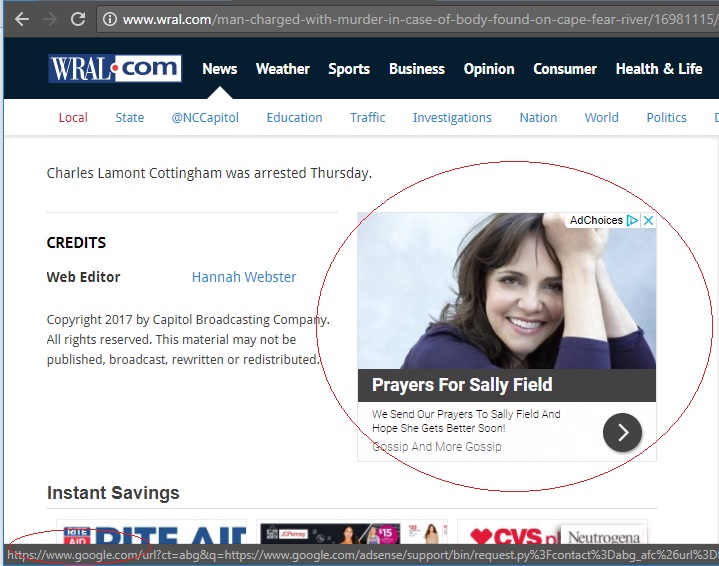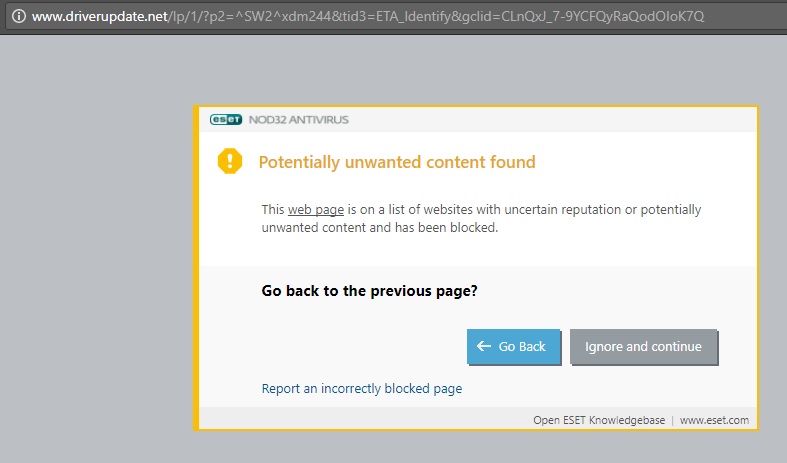In January 2017 I wrote about how Legit News Websites Accidentally Showing Fake News. Shortly after I realized that the “content boxes” distributing the fake news and malicious software we not Outbrain or Taboola but were Google Adsense “Display Ads”.
In most cases, when you click on one of these fake stories, you’re directed to a site which looks like a valid website. These “impersonated” websites include Business Insider, Fox News, US News and other Health related websites.
Most of the time, the impersonation sites quote popular people such as Donald Trump, Bill Nye, Jimmy Fallon or one of the Shark Tank sharks and they’re pushing a useless product which is “free” if you pay for shipping and handling, but then the company begins charging you $90/mo or your membership. In other cases, Windows users are tricked into installing fake antivirus software applications onto their PC which falls into the category of “scareware” or “malware”.
I’ve been forgetting to write this article, then today I caught wind of an article on the New York Times: Google Serves Fake News Ads in an Unlikely Place: Fact-Checking Sites. In the article, the NYT authors mention the skin cream ads which I’ll highlight below.
Fake News Examples
While I’ve been putting this article off, I do have some screenshots I’ve been collecting. And I’ve been documenting the scams for a while here on this blog.
Here are some of the recent “fake news” ads which are distributed via the Google Adsense network which NYT was referring to that I’ve written about:
- Fake Fox News & Shark Tank Content Showing on CNN.com – Ultimate Testo Explosion
- Jolique Cream Skin Care – Prayers for Sally Field
- Bill Nye Brain Booster Business Insider Advanced IQ
- Vanna White Firing and Garcinia Cambogia Weight Loss Pill
It’s not just Google. In fact, I recently wrote about how Yahoo displays these ads right on their home page.
While the NYT points out the ads are displaying on Snopes and PolitiFact fact checking sites, it is also worth noting that these ads usually display on Local News Websites. This is dangerous as the ads look like news headlines on a news website and take you to a site impersonating a real news website. Thousands of people have read my article about fake testosterone supplements, and those are just the curious. That tells me hundreds of thousands of people are making their way to these fake documents.
Here’s a screenshot I published in September 2017 showing the Fake News from Google AdSense:
Malware
Google AdSense displays ads on sites all over the world. They describe how placements and personalized distributing of the ads works here.
As for Malware, I was able to find a good example just a moment ago over on Snopes. I visitied Snopes in a clean Google chrome Incognito window and the first ad which popped up was for a “driver installer”. Having worked in IT for nearly 20yrs, I know this is a scam from a mile away (and also that I don’t need any new drivers). I clicked the ad, and instantly my ESET Antivirus sprang into action warning me that the site I was attempting to visit is on a list of sites with a poor reputation:
If my $29/yr antivirus application knows this is a scam, why doesn’t Google?
Isn’t everyone sick of the “Start Download” buttons and sites selling fake skin creams which make you 20yrs younger and pills which prey on vulnerable Internet users?
What is the solution?
I don’t know what the actionable takeway is here but I do know AdSense generates millions or billions of dollars and that people have been seeing these ads for a very long time. I’d expect them from “promoted content” distribution networks but not from Google. It will be interesting to see how they respond to this now that NYT has covered it. I will give them credit for attempting to keep Fake News out of their “Top Stories” section and for their crackdown in 2016 but as NYT points out there is still more work to do. Indeed, this may always be a game of cat and mouse. I predict that moving forward companies will need to adopt a quicker reaction time.
- Google “Pure Spam” Penalty Deindexes Sites March 6 2024 - March 12, 2024
- What Happened to ChicagoNow.com? - August 30, 2022
- The December 2021 Google Local Pack Algorithm Update - December 17, 2021






Leave a Reply